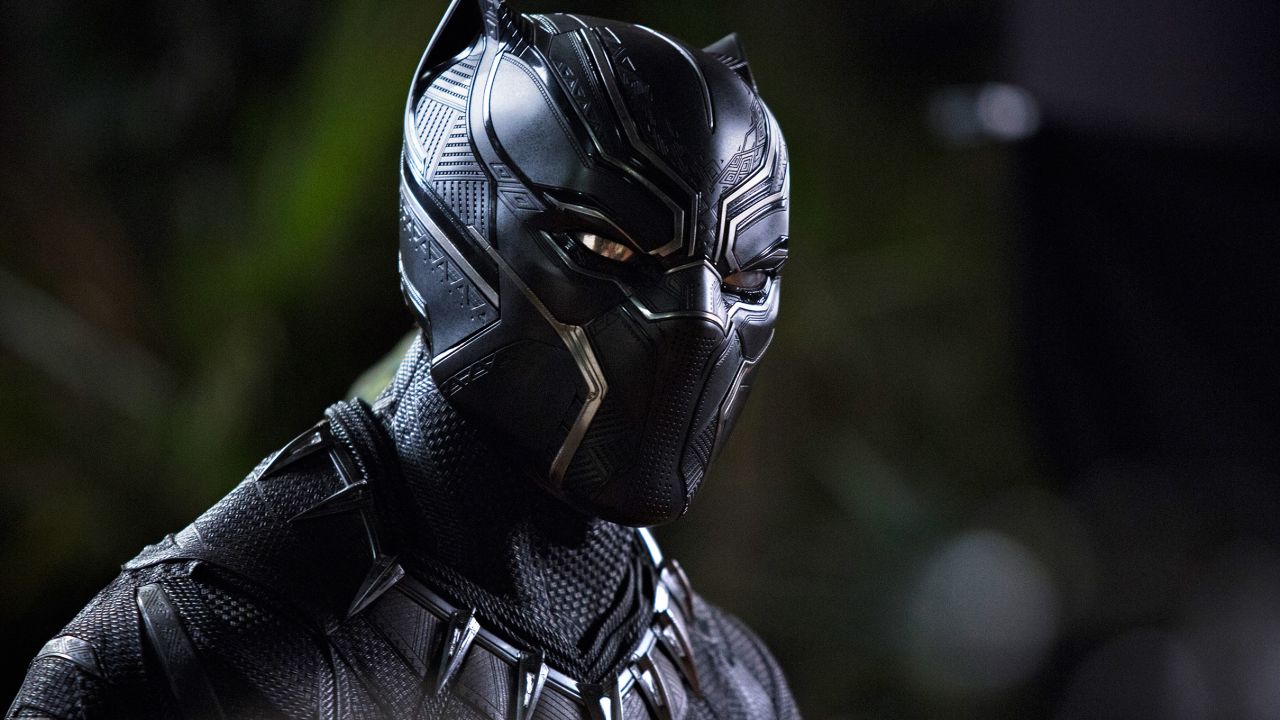
by Michael Foust | Feb 16, 2018
T’Challa is a young prince who also happens to be heir to the throne of Wakanda, a Third World African country that’s among the poorest nations on Earth.
At least, it seems that way.
Hidden within the jungles of fictional Wakanda is a rich, technologically advanced city that boasts towering skyscrapers, futuristic airplanes and magical weapons. It’s all powered by “vibranium,” an other-worldly metal that explorers and villains alike have sought for centuries. The peaceful Wakanda just happens to have the world’s largest vibranium mine.
Although most of the world knows nothing about Wakanda’s wealth, a handful of villains do know about it – and their lust for vibranium leads to the killing of T’Challa’s father, the king.
Now on the throne, T’Challa is given the crown and the name “Black Panther” – the title inherited by every Wakandan ruler. He also inherits a ton of perks, including the Black Panther superhero suit and the just-invented black panther shoes (they’re cat-like quiet!).
The future for the selfless and peace-loving T’Challa seems bright – that is, until a long-lost relative shows up and demands that T’Challa step aside so the weapons can be used to start a worldwide racial war. Will T’Challa prevail against this threat?
It’s all part of the new Marvel film Black Panther (PG-13) starring Chadwick Boseman (42) as T’Challa/Black Panther; Michael B. Jordan (Fantastic Four) as his nemesis, Erik Killmonger; Letitia Wright (The Commuter) as T’Challa’s brilliant younger sister, Shuri; and Andy Serkis (Planet of the Apes series) as Ulysses Klaue, a villain.
Black Panther is getting rave reviews, and rightfully so. It’s a fun film that breaks the mold on Marvel movies. In a multicultural society, we need superheroes from different cultures. But while much of the attention has highlighted the race and African heritage of these new superheroes, we shouldn’t overlook the other ways they differ from most other Marvel superheroes. Gone are the sarcastic one-liners and the playboy qualities found in some of the most popular superheroes. Instead, we get a mature superhero in the Black Panther who is full of mercy and altruism – on the individual and national level. No doubt, other Marvel heroes have exhibited compassionate qualities, but in the Black Panther they are more evident. This is one reason Black Panther is near the top of my favorite Marvel films.
Here’s more good news for families with children: The film contains less language and sexuality than most other Marvel films. The caveat: The violence is excessive.
Let’s examine the details:
Warning: minor spoilers!
Violence/Disturbing
Excessive. It might be the most violent PG-13 Marvel movie yet. The film opens with a gun fight and gives us another gun fight minutes later that includes fighting and people being stabbed with spears. We see a lady pass out/die from food poisoning. Security guards are shot dead at point-blank range. Black Panther gets involved in several close (and lengthy) hand-to-hand fights that result in bloodied faces. We watch an intense car chase through city streets that includes gunfire. A bad guy shoots and kills someone at close range; we see blood on the shirt. Two characters get into a sword fight; someone is speared. A bad guy puts his hand around a woman’s throat and lifts her into the air; she doesn’t die. The movie ends with a battle that involves lots of gunfire and fighting, including people being stabbed with spears and knives (although it remains mostly bloodless).
Sexuality/Sensuality/Nudity
Minimal/moderate. Throughout the film we see African women in belly-revealing outfits, and a few men without their shirts. We see African women dance. A couple of women wear somewhat low-cut dresses. We see characters kiss twice.
Coarse Language
Minimal. He—(4), s—t (3), a—(1). (None by Black Panther.)
Other Positive Elements
Black Panther shows mercy on multiple occasions, refusing to kill people when he can, even though they’re his enemies. He also displays a deep love for his countrymen, not wanting to see them harmed.
Other Stuff You Might Want To Know
Black Panther’s sister jokingly flips him off. One scene takes place in a casino where whiskey and alcohol are consumed.
For Black Panther to remain on the throne, he must physically beat any challengers.
Life Lessons
The movie gives us life lessons on self-sacrifice (Black Panther, his family, others), mercy (Black Panther), the desire for peace (Wakanda, Black Panther), and outreach to the poor (Black Panther). It also tackles issues related to foreign aid and the refugee crisis. (Some people in the film want Wakanda to change its isolationist policy.)
Worldview
T’Challa and his people practice a form of ancestral worship.
“Praise the ancestors,” we hear several times.
The Wakandan people even perform a ceremony that allows T’Challa to visit and talk to his deceased father. Another character does something similar later in the film.
If you have children, this might be worth a post-movie discussion. Scripture says we are to worship God alone and that when we die, our spirits go either to heaven or hell. Jesus is our lone intercessor (1 Timothy 2:5-6).
Sponsors
The drink company Brisk is the most well-known movie partner for kids.
What I Liked
The landscapes. The music. The story. The compassion for others shown by Black Panther.
What I Didn’t Like
The excessive violence. The gunfighting seemed more in line with a James Bond film, not a superhero flick.
Discussion Questions
- How is Black Panther different from other superheroes?
- Is Black Panther’s desire for peace naïve?
- What did you think of Erik Killmonger’s goal for the weapons?
- What would you say to someone who told you they pray to their ancestors?
- What did you think about the controversial decision T’Challa’s father made?
Entertainment rating: 3.5 out of 5 stars. Family-friendly rating: 3 out of 5 stars.
Rated PG-13 for prolonged sequences of action violence, and a brief rude gesture.
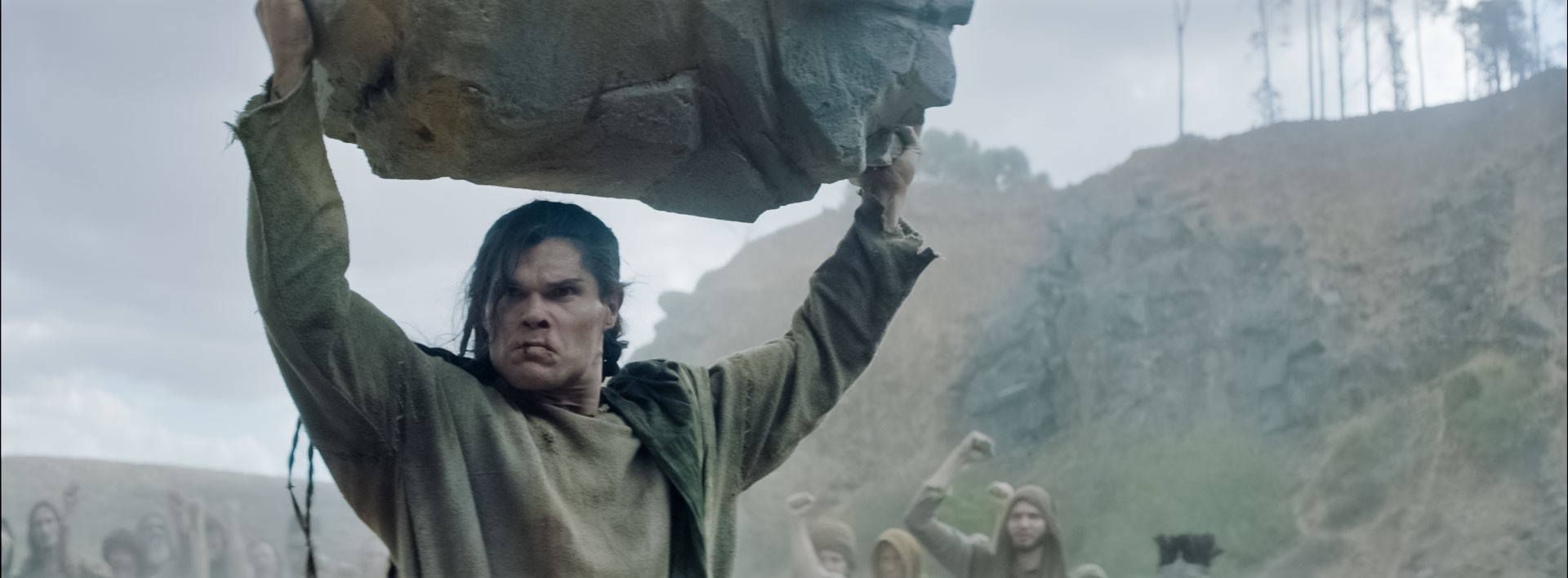
by Michael Foust | Feb 16, 2018
‘Samson’ is one of the best Old Testament film adaptations of the modern era, combining biblical accuracy with solid acting and impressive action scenes.
Old Testament movies on the big screen don’t have a solid track record in the modern era.
The 2014 film Exodus: Gods and Kings got a lot of things right but also largely omitted, well, God.
That same year, the movie Noah took so many liberties that by the end of it you were left wondering: Was that supposed to be a Bible story?
Which brings us to the new film Samson (PG-13), which is out in theaters this weekend. Made by the faith-based studio Pure Flix, it stars Taylor James (Christmas Eve) as Samson, Caitlin Leahy (Black-ish) as Delilah, Golden Globe winner Rutger Hauer (Batman Begins) as Samson’s father Manoah, Billy Zane (Titanic) as King Balek, and Jackson Rathbone (The Twilight Saga) as Rallah (Balek’s son).
It tells the story of an Israelite gifted by God with supernatural strength whose own weakness to sin led to his downfall. But in the end, God still used him.
Samson surprised me. I went in with low expectations and with the assumption that I wouldn’t like it, but walked away impressed. It’s one of the best Old Testament film adaptations of the modern era, combining biblical accuracy with solid acting and impressive action scenes.
That’s no easy accomplishment when considering the story of Samson: He slayed a lion with his bare hands (Judges 14:5), killed a thousand men with a jawbone (Judges 15:16), and burned the countryside by fastening torches to fox tails (Judges 15:3-5). The Pure Flix filmmakers could have skipped those incredible feats, but to their credit, they left them in the script, and the movie is stronger for it. The film does a nice job of bringing Samson’s quirky exploits to life.
He essentially was the world’s first superhero — a Rambo before there was a Rambo – who credited God for his abilities.
“Our God is not weak!” he shouts at the beginning of the film.
Samson takes some creative liberties but keeps God at the center of the plot. Still, it’s not a perfect film. More about that in a moment.
Warning: minor spoilers!
Violence/Disturbing
Moderate/excessive. Although it remains largely bloodless – similar to a modern-day Marvel movie. Soldiers pull people from their homes, looking for Samson. We see a soldier stab someone from behind with a sword, killing him. A Philistine beats up several men before Samson shows up and saves the day. A male character (not Samson) threatens a female character with violence. We learn that Samson’s wife was killed. Samson fights (and whips) Philistines several times, killing some of them. Samson witnesses one of his family members killed. Samson kills solders with a jawbone. A member of the royal court stabs another member.
Sexuality/Sensuality/Nudity
Minimal. Samson is seen shirtless several times throughout the film. We see him kiss women about four times, but it remains relatively tame. The film contains no nudity or bedroom scenes. The Samson-Delilah angle stays family-friendly.
Coarse Language
None.
Other Stuff You Might Want To Know
Throughout history, Christians have considered Delilah as a cunning woman – the woman you would never want your son to marry. The Zondervan book All the Women of the Bible even calls her “one of the lowest, meanest women of the Bible—the female Judas of the Old Testament.”
Yet in the movie Samson, Delilah is portrayed in a positive light, as someone who truly loved Samson and who regretted her actions.
Life Lessons
The movie gives us lessons on temptation (Samson), consequences (Samson), regret (Samson), trusting God (Samson) and redemption (Samson, God).
Worldview
At first blush, the story of Samson is one of failure. Think about it: He was chosen by God to help deliver Israel but ended his life in chains – all because of his sinful lust.
But dig a little deeper, and Samson’s story is one all of us should embrace. It’s a tale of God’s love and discipline (Hebrews 12:4-11), and of God’s power (Judges 13:5). It’s also a story about how God accomplishes His will through sinners like us. Even after Samson succumbed to sin and abandoned God countless times – and even after he was blinded and chained – God used him to “save Israel from the hand of the Philistines” (Judges 13:5).
“His God is with him. He’s invincible!” the Philistines says during one poignant moment.
God uses sinners! For that, we should be grateful.
What I Liked
The action scenes. The way the film credits God for Samson’s strength.
What I Didn’t Like
The characters are too groomed and wear too much makeup. More dirt and messy hair, please! To the defense of Pure Flix, though, lots of history-based mainstream movies also are too clean and crisp.
Additionally, the film would have benefited from more Middle Eastern-looking actors and actresses.
Discussion Questions
- Why did God give Samson strength one more time?
- What can we learn from Samson’s story about sin? About temptation? About consequences? About second chances?
- What did you think about the film’s depiction of Delilah?
- What was the purpose of Samson’s long hair? Why was he forbidden to cut it?
Entertainment rating: 3 out of 5 stars. Family-friendly rating: 4 out of 5 stars.
Samson is rated PG-13 for violence and battle sequences.
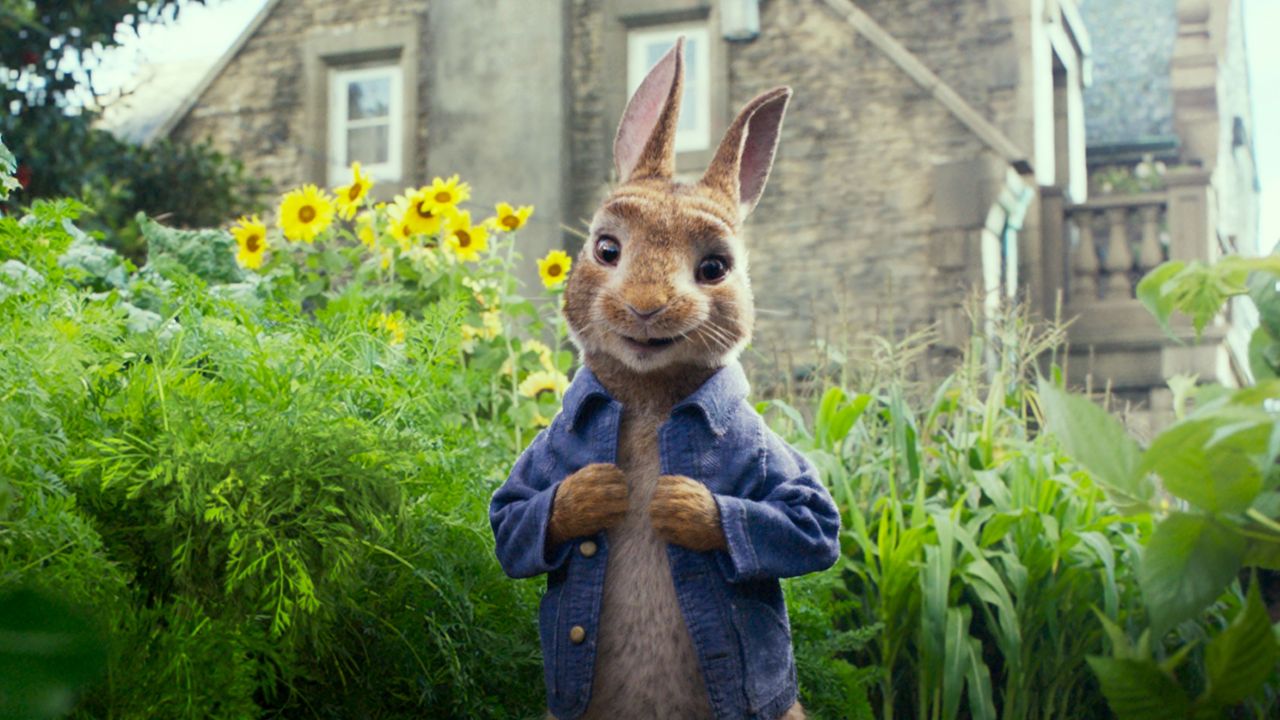
by Michael Foust | Feb 10, 2018
Peter Rabbit is not as squeaky-clean as Paddington or Paddington 2, but nevertheless stays within the family-friendly realm and provides a story that most families will welcome.
Thomas McGregor is a self-centered department store employee who wants only one thing out of life: to climb the corporate ladder.
Of course, life rarely goes as planned.
It started going downhill when he learned that the company slackie got the much-coveted promotion. Then, Thomas discovered that a great uncle (“Mr. McGregor”) passed away and left him a rural cottage. He hates the countryside. Soon thereafter, he got fired.
So instead of designing picturesque displays in big-city store aisles, he’s now cleaning up an old house and tending to an out-of-control garden. And we haven’t even mentioned the rabbits. There are five of them, including one who has a mischievous streak. Thomas hates rabbits.
Yet these cute-and-furry-creatures live with the next-door neighbor Bea, an animal lover who just happens to be single. Thomas and Bea surely would make a good couple – that is, if he doesn’t kill her pets first.
It’s all part of the new film Peter Rabbit (PG), which is out in theaters this weekend and stars Domhnall Gleeson (The Last Jedi) as Thomas, Rose Byrne (X-Men: Apocalypse, Annie) as Bea, James Corden (The Late Late Show) as Peter Rabbit, Daisy Ridley (The Last Jedi) as Cottontail, Margot Robbie (The Legend of Tarzan) as Flopsy, and Elizabeth Debicki (Guardians of the Galaxy) as Mopsy.
The film is based on the books by Beatrix Potter and – like Paddington — features computer-generated animals interacting in the real world. Peter Rabbit is not as squeaky-clean as Paddington or Paddington 2, but nevertheless stays within the family-friendly realm and provides a story that most families will welcome. It’s far more wholesome than the majority of animated films. It’s also funny.
Still, it does contain slapstick humor similar to that in Home Alone, even if it includes a redemptive and positive ending.
Warning: minor/moderate spoilers!
Violence/Disturbing
Moderate. Gardeners chase rabbits around the garden with a rake and hoe, and set traps for them. Someone dies of a heart attack. We learn that Peter’s father was killed by Mr. McGregor and that his mother passed away, too. Peter claims he killed Mr. McGregor. Someone tries to kill the rabbits with dynamite. A rabbit and a human character fight. An electric fence is set up to kill the rabbits, but it backfires. The rabbits set traps throughout the house for a human character, and he falls for all of them. The rabbits tie the electric fence current to doorknobs.
Sexuality/Sensuality/Nudity
Minimal. Thomas and Bea obviously like one another, but we see them kiss (briefly) only once. Thomas tells her he loves her. We see the top of a man’s bottom, and a rabbit places a carrot in his underwear. We briefly see Thomas without a shirt and also in his boxers. (Neither scene involves Bea.) The rabbits joke that one of the rabbits appears to be naked when he wears a brown shirt.
Coarse Language
None. We hear “nipples” (1), “flatulent” (1), “butt” (2) and “naked.”
Other Positive Elements
We learn that Peter’s parents cared deeply for him and his three sisters. Bea turns the curmudgeon Thomas into a lover of nature.
Other Stuff You Might Want To Know
We discover that Thomas’ parents died, and he was placed in a group home. A pig says about Peter Rabbit: “All hail the prodigal son.”
Thomas is allergic to blackberries – a fact that Peter Rabbit and his friends know all about. So, they pelt him with blackberries until one lands in his mouth, sparking an allergic reaction that forces him to use an EpiPen. He nevertheless passes out and wakes up in the middle of the night. It’s a scene that should not have been included in a children’s film – especially when many of the children watching it either have a food allergy or know someone who does. With a life-or-death issue like this, it’s no laughing matter.
Life Lessons
Peter Rabbit gives us solid lessons on repentance (Peter Rabbit himself, Thomas), humility (Peter Rabbit, Thomas), forgiveness (Bea) and self-sacrifice (Thomas, the rabbits),
Worldview
I must admit: Halfway through Peter Rabbit, I was concerned. The message was muddled: Rabbits should be given free reign in our gardens, and if we don’t acquiesce, they have the moral freedom to declare war and do whatever is necessary.
But slowly, the story changed. And by the end, our naughty little rabbit was seeing the error of his ways. I won’t give away the ending, but it’s not difficult to turn Peter Rabbit into a moral tale about repentance, forgiveness and second chances – lessons straight from Scripture. Not bad for a story about rabbits.
Discussion Questions
- What caused Peter Rabbit to repent? What caused Thomas to repent? Why did they not see their errors until it was nearly too late?
- What can we learn about forgiveness from Peter Rabbit’s story?
- Did Peter Rabbit and Thomas deserve a second chance? Why or why not?
- Was Thomas’ attitude about rabbits and animals wrong? Why or why not?
- Is it OK to harm animals to keep them from our gardens/crops?
Entertainment rating: 3.5 out of 5 stars. Family-friendly rating: 4 out of 5 stars.
Peter Rabbit is rated PG for some rude humor and action.
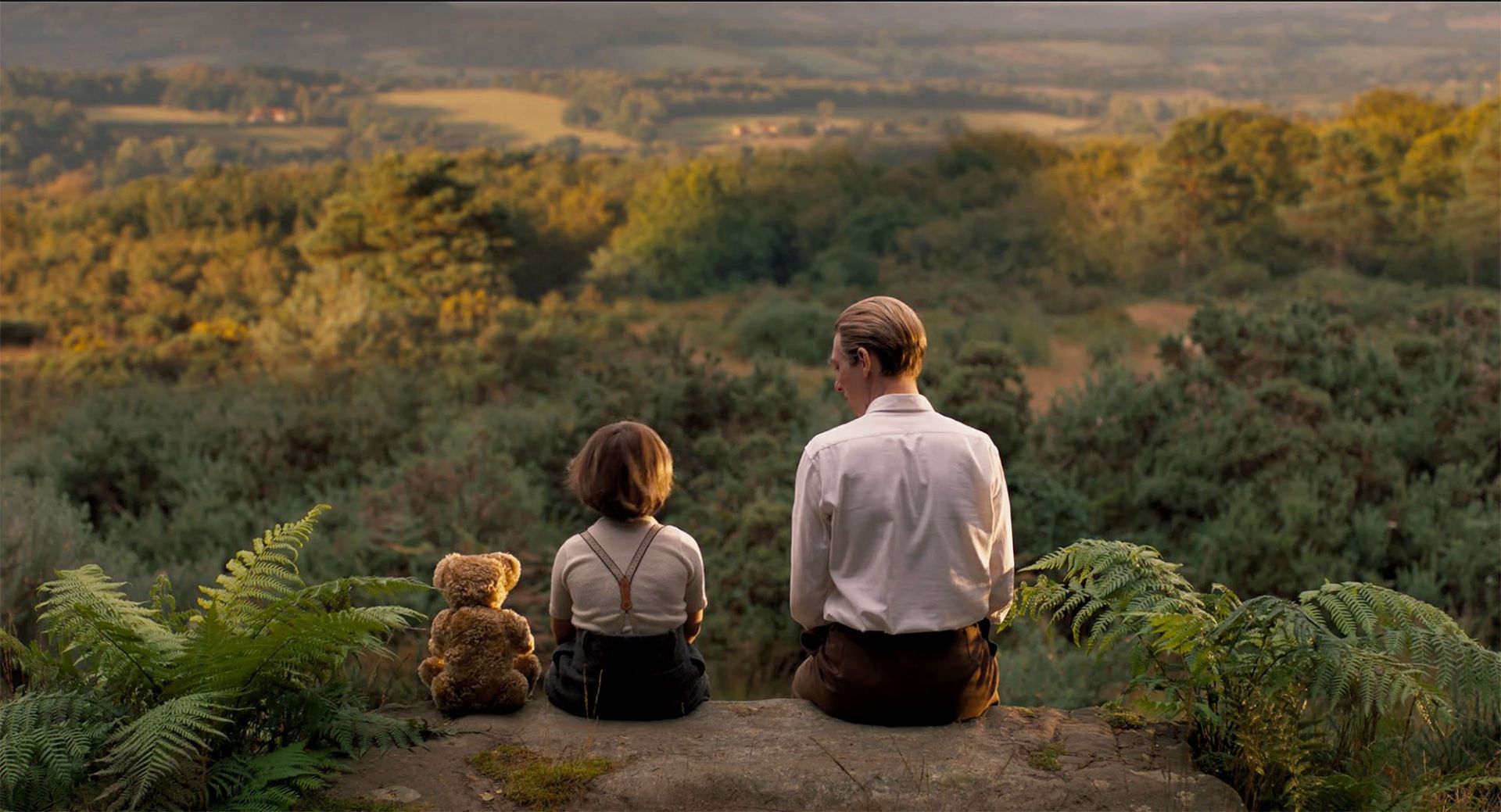
by Michael Foust | Feb 2, 2018
Goodbye Christopher Robin (PG), now out on DVD and Digital HD, is among the most thought-provoking and family-friendly movies our reviewer has seen.
Alan Milne is a World War 1 veteran trying to make a living as a playwright in post-war Britain. But try as he might, this pensive husband and father is having trouble forgetting those horrible battlefield experiences.
When a balloon pops, he freezes and thinks of gunfire. When he encounters a beehive, he remembers warfare. Even snowball fights and bright lights trigger war-like emotions that make it difficult to cope.
His wife Daphne thought the birth of their first child (a son) might bring him back to reality, but nothing changed. Instead of penning plays for the London theaters, he now spends his days staring at the wall and brooding over the causes of the Great War. He never smiles.
“You are a writer who doesn’t write,” his wife, frustrated, tells him.
Thus, needing a change of scenery and wanting to escape the big city, Alan moves his family to the countryside. There, among rolling hills and colorful forests, he gets inspired to write a book about the joys of childhood. His subject will be his imaginative 8-year-old young son, Christopher Robin, who loves to daydream about friendly bears and talking animals. His son even has a name for his favorite Teddy Bear: Winnie-the-Pooh.
It’s all part of Goodbye Christopher Robin (PG), which is now out on DVD and Digital HD and tells the story of the real-life Christopher Robin, a British boy who went from obscurity to famous overnight in the 1920s and 1930s when his father’s Winnie-the-Pooh books became a hit.
It stars Domhnall Gleeson (The Force Awakens, The Last Jedi) as Alan, Margot Robbie (Suicide Squad, The Legend of Tarzan) as Daphne, Will Tilston as the young Christopher Robin, and Kelly Macdonald (Brave, Harry Potter and the Deathly Hallows: Part 2) as their nanny, Olive.
Goodbye Christopher Robin is among the most thought-provoking, family-friendly movies I’ve seen. It’s entertaining – yes – but it also begs the viewer to examine their own priorities and their own family life. It’s like a mainstream version of the faith-based Courageous (2011), combined with the historical elements of The Man Who Invented Christmas (2016). We get to discover the origins of Winnie-the-Pooh while learning numerous life lessons along the way.
Warning: minor spoilers!
Violence/Disturbing
Minimal. We see a brief flashback to a 1916 battlefield scene, but we don’t see anyone shot. We watch as Alan experiences several episodes of post-traumatic stress syndrome (PTSD). We also hear Alan and others discuss the causes of World War I and the need for peace.
Sexuality/Sensuality/Nudity
Minimal. A handful of women wear slightly low-cut dresses at a dance. Alan and Daphne (fully clothed) share a brief kiss in bed. Later in the film, they kiss again.
Coarse Language
Minimal. One use of da—it.
Other Positive Elements
We see a crucifix hanging on the Milne home, and Christopher and Olive kneeling beside the bed for bedtime prayers. Later, Christopher and his father pray before a meal, and Christopher says a bedtime prayer alone. Eventually, Alan shows leadership in making a major decision. We see Olive sacrifice for her own family.
Other Stuff You Might Want To Know
We hear Daphne giving birth to Christopher, but we don’t see anything.
Life Lessons
Goodbye Christopher Robin gives us lessons on the joys of fatherhood (Alan) and parenting (Alan and Daphne), the innocence of childhood (Christopher), the perils of fame (several characters) and childhood stardom (Christopher), bullying (several characters), the horrors of war and PTSD (Alan).
Worldview
Where do you start? Goodbye Christopher Robin includes multiple issues worthy of a worldview discussion, but let’s examine just one: not wasting time.
When I was single, time seemed to stand still. But now that I am a father of four small children, time has hopped into the express lane. It seems like just yesterday that my oldest son was born. Today, he is nine, and before long, he’ll be out on his own. Where did the time go?
Scripture tells us that life is like a “mist that appears for a little time and then vanishes” (James 4:14). It’s like the morning fog that lifts before daybreak. Sure, that could depress us, but it instead should drive us to live life with eternity in focus – and not to waste our time. Ask this question daily: If today was your last day with your children, would you have any regrets?
The film’s lesson on childhood stardom is worthy of a post-movie discussion, too. Finally, the movie has a wonderful redemptive element that can be appreciated only by watching it.
What I Liked
Watching the bond between Alan and his son grow. It made me want to race home and hug my children.
What I Didn’t Like
Nothing major.
Discussion Questions
- What are the perils of childhood fame? Is it worth it?
- For children: Have you seen examples of bullying? What did you do? What should you have done?
- For parents: What did you learn from the relationship between Alan and Christopher? Did it impact how you view your children?
- How does tragedy impact relationships within a family? How did it impact the relationship between Alan and his family? What is the “cure”?
- Can time that was wasted – as it was with Alan and Christopher — be made up?
Entertainment rating: 4 out of 5 stars. Family-friendly rating: 4 out of 5 stars.
Goodbye Christopher Robin is rated PG for thematic elements, some bullying, war images and brief language.
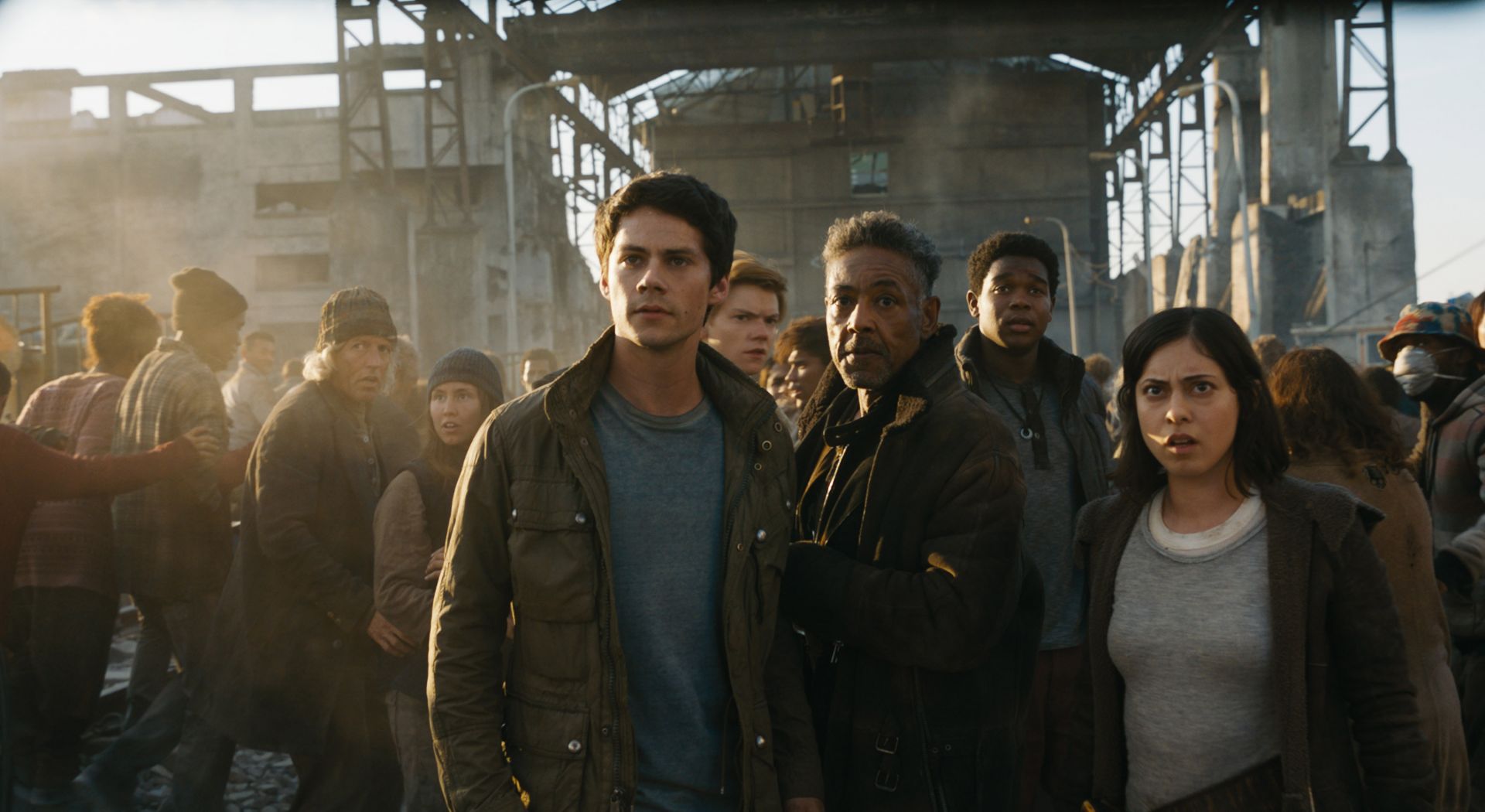
by Michael Foust | Jan 26, 2018
The world of ‘Maze Runner’ is science fiction – yes – but it’s a cautionary tale about medical research we should not ignore.
Thomas is a brave young man living in a dystopian world full of desolate cities, rusted cars and blowing tumbleweed. He’s also one of the few healthy people left on the planet, which makes him and his friends – who also are healthy – curiosities to society.
That’s because something called the “flare virus” has ravaged the population, turning anyone who catches it into flesh-eating, zombie-like creatures called “Cranks.” And with healthy people now outnumbered 3-to-1, everyone’s getting desperate for a cure.
Enter the scientific group WCKD, which is searching for – make that hunting for – people like Thomas who are immune to the sickness. WCKD’s researchers are developing an anti-virus serum through a process that often requires killing the subjects. Thus, for the world to be cured of the flare virus, Thomas and all his healthy buddies first must die. Any volunteers?
It’s all part of Maze Runner: The Death Cure (PG-13), which opens in theaters this weekend and finds Thomas (Dylan O’Brien) and his friends working to free the dozens of healthy people captured by WCKD. At the heart of the film is Thomas’ search for his good friend Minho (Ki Hong Lee), who is being held in the last remaining city on Earth – a city surrounded by a large wall.
Maze Runner: The Death Cure is the final installment in a trilogy that began with The Maze Runner (2014) and was followed by Maze Runner: The Scorch Trials (2015). They’re based on the young adult novels by author James Dashner.
This one is more entertaining than The Scorch Trials but still not as fun as the first one in the series. (My view: When they escaped the maze, the story lost some of its luster.) The Death Cure has more story and plot than The Scorch Trials, but is still too action-heavy.
Still, the entire series has relevance to our modern-day approach to medical and scientific research, in which the end often justifies the (unethical) means.
Warning: minor spoilers!
Violence/Disturbing
Excessive. You can’t make a zombie movie without scary-looking zombies, and Death Cure has lots of them. It also has quite a bit of violence. The movie opens with a gun battle, and is quickly followed with Minho chased by a monster in a dark tunnel. Later, our heroes are surrounded by zombies underground, and some of the zombies are shot or run over by a vehicle. We see a grotesque-looking man with half a nose and a scarred face (who, incidentally, is a good guy). People who catch the flare virus undergo a frightening transformation that involves their veins coming to the surface of their skin. We see a woman shot and killed, and a man stabbed. We also see someone choked (but not to death). The movie ends with a war-like battle in the city involving bombs, missiles and plenty of bullets.
Sexuality/Sensuality/Nudity
Minimal. A man and woman share a brief kiss.
Coarse Language
Moderate, with 33 total: s—t (15); h—l (8); GD (2); d—n (2); misuse of “Jesus” (1); a—(1); d—k (1); SOB (1); pi—ed (1); ba—rd (1).
Other Positive Elements
Even though he has rescued dozens of people, Thomas refuses to forget about Minho – and he’s willing to die to find him. Many others share Thomas’ outlook. Thomas and his friends, led by a character named Vince (Barry Pepper), stick together in opposing the evil acts of WCKD.
Other Stuff You Might Want To Know
We watch a minor surgery procedure and see a bloody incision.
Life Lessons
Maze Runner: The Death Cure gives us lessons in self-sacrifice (Thomas, the others), selflessness (Thomas, the others), forgiveness (as seen in a romance angle involving Thomas) and standing up for what is right (Thomas, the others).
Worldview
The world of Maze Runner is science fiction – yes – but it’s a cautionary tale we should not ignore.
During one experiment on Minho, a researcher tells another one: “You realize this may kill him, right?” Yet the other researcher responds: “I have my orders.”
Thomas’ love interest, Teresa (Kaya Scodelario), seems to share this approach. When Thomas asks her when the experiments will end, she retorts, “When there is a cure.”
If WCKD had a mission statement, it would be “a cure at all costs.”
American won’t ever follow WCKD’s unethical path … right? Or perhaps we’re already there, with experiments on fetal body parts, embryos and human-animal chimeras (read: half human, half animal). And if you want to read stories of Maze Runner-type experiments from yesteryear, simply Google “unethical medical research” – and prepare to be shocked.
Questions about ethics often are drowned out by shouts of “but it will cure so many people!”
The same utilitarian arguments we hear in Maze Runner are used by researchers today. And that’s scary.
Perhaps it’s time we go back to Genesis and re-discover how each person was created in the image of God (Genesis 1:27), worthy of protection and respect.
What I Liked
The opening action scene, which involved a train, a helicopter and a couple of vehicles.
What I Didn’t Like
The movie’s length. At two hours and 23 minutes, it’s about half an hour too long.
Thumbs Up … Or Down?
Thumbs up, but barely.
Discussion Questions
- If unethical research produces a medical cure, should we take advantage of it?
- What are the ethical boundaries of medical research? Are there any legal procedures that you oppose? Would you ban them?
- Why are we as a society so fascinated by zombies?
- Did you like the ending? Why or why not?
Entertainment rating: 2.5 out of 5 stars. Family-friendly rating: 2.5 out of 5 stars.
Maze Runner: The Death Cure is rated PG-13 for intense sequences of sci-fi violence and action, language, and some thematic elements.




